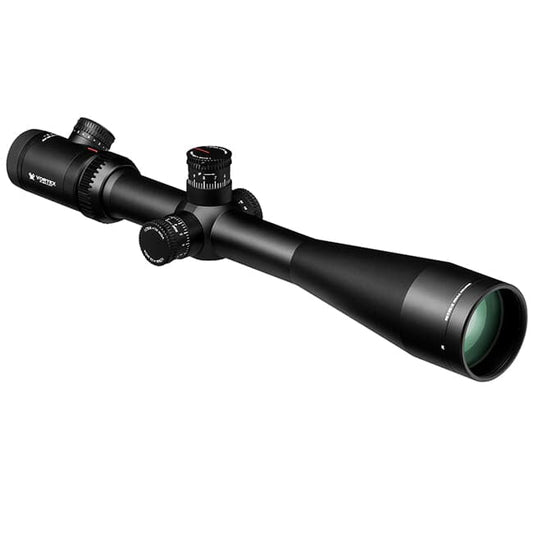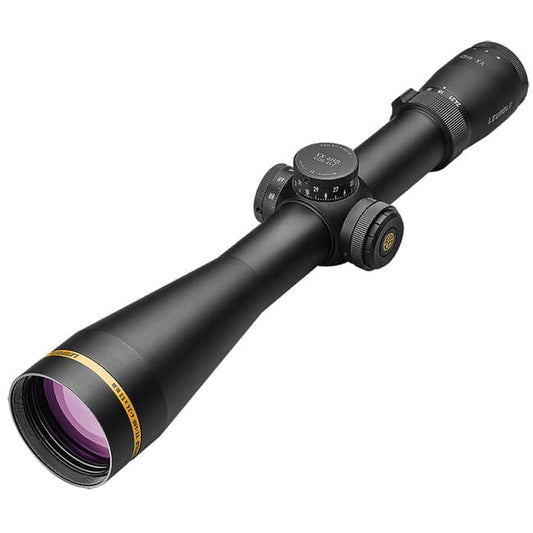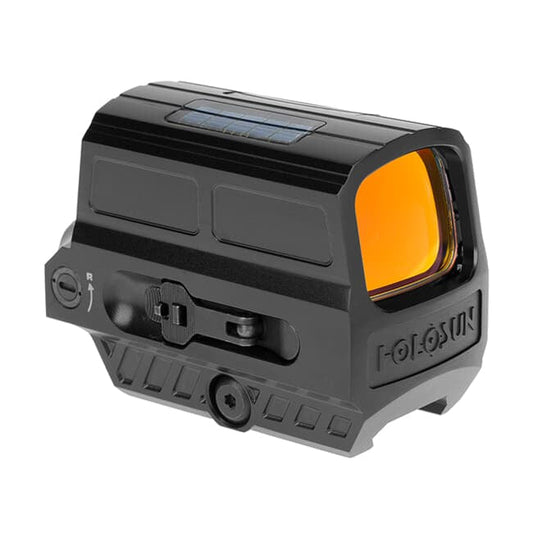Riflescope Mounting: Choosing the Right Rings and Bases
You've just entered the world of riflery, a space where precision meets passion, and the minute details can make or break your shot. Have you ever noticed how the smallest shift can significantly affect your aim? That's where choosing the right rings and bases for your riflescope comes into play. Even the famous war photographer, Robert Capa, once said, "It's not enough to have talent, you also have to be in the right place." This statement rings true when it comes to riflescope mounting.
Our journey today will take us deep into the world of riflescope mounting. We'll go over the different types of mounts, factors to consider when choosing, selecting the right rings, exploring different bases, and finally, a detailed step-by-step guide to installing your scope mount.
So, take a deep breath and prepare to immerse yourself in the intricacies of riflescope mounting, a skill that's as much art as it is science.
Different Types of Rifle Scope Mounts
If you were to compare riflescope mounts to ice cream flavors, you'd realize there's much more to explore beyond just vanilla and chocolate. Essentially, there are three main types you should familiarize yourself with: Picatinny, Weaver, and Dovetail mounts.
Picatinny mounts are the crowd-favorite, known for their compatibility and flexibility. They're like the all-rounder athlete in a sports team. On the other hand, Weaver mounts, a bit narrower than Picatinny, stand as the reliable, sturdy teammate. Dovetail mounts, showcasing their unique 'dove's tail' design, are ideal for hunters who prioritize keeping their rifles as lightweight as possible.
Now comes the big question: which one suits your needs? Let's delve deeper.
Factors to Consider When Choosing Scope Mounts
Selecting a scope mount might seem as trivial as picking out socks, but ask any seasoned shooter, and they'll tell you it's more like choosing the right running shoes. Several factors come into play:
- Type of shooting: Are you a hunter or a precision shooter? Your shooting style significantly affects your choice.
- Rifle and Scope type: These will determine which mount will be the most suitable.
- Recoil: Your mount should withstand your rifle's recoil. It's all about durability!
- Comfort: Never compromise your comfort for anything else. Your shooting posture should be natural and relaxed.
Remember, in the shooting world, one size does not fit all. You must find what suits your needs and comfort.
Selecting the Right Rings for Your Rifle Scope
Choosing the right rings for your rifle scope is like choosing the perfect pair of earrings for an outfit. It might seem insignificant, but it can greatly enhance or diminish your overall look, or in this case, your shooting experience.
Firstly, the size of your scope will primarily determine the diameter of your rings. The scope should sit as close to the rifle as possible without touching it. Much like Goldilocks, you need to find the one that's 'just right.' Not too high, not too low.
The material is also a vital factor. It's a constant tug-of-war between steel and aluminum rings. Steel rings promise durability but at the cost of being heavier, while aluminum ones are lighter but might not handle heavy recoil as well.
Exploring Different Bases for Rifle Scopes
Choosing the right base for your scope is as important as selecting the foundation for a building. There are two primary types: one-piece bases and two-piece bases.
One-piece bases provide increased stability and are the go-to choice for long-range shooting or rifles with heavy recoil. However, they may limit your ability to load the rifle, especially in top-loading models.
On the other hand, two-piece bases offer more loading flexibility but might lack the stability provided by one-piece bases. It's a classic case of stability versus flexibility.
Step-by-Step Guide: Installing Rifle Scope Mounts
Now, let's dive into the step-by-step process of installing your riflescope mounts. Think of it as a recipe; you need to follow each step carefully and in order to achieve the best results. Let's break it down:
Preparing Your Rifle for Scope Mount Installation
-
Safety Check: Always ensure your rifle is unloaded before beginning. As the adage goes, "safety first."
-
Securing Your Rifle: Use a gun vice to hold your rifle steady during the installation. It's much like a mechanic needing their car securely on the hoist.
-
Cleaning: Clean the rifle's mounting surface to ensure a secure fit. It's like wiping down your counter before you start baking.
Choosing the Right Tools for Scope Installation
Like a chef gathering their tools before starting to cook, having the right tools for your scope installation is key. Here's what you'll need:
-
Screwdrivers or Allen keys: These are crucial for securing the mounts to the rifle.
-
Torque wrench: Ken Campbell says, "A torque wrench is especially important. Over-tightening screws can lead to damaged threads or a distorted scope tube. A torque wrench will ensure you tighten each screw to just the right level."
-
Thread locker: This is optional but can help keep your screws secure, particularly on rifles with heavy recoil.
-
Small Container: Don't overlook this. It's a handy spot to keep screws so they don't disappear when you need them most.
Properly Aligning Scope Rings for Installation
Much like aligning your car's tires for optimal performance, you'll want to make sure your scope rings are properly aligned. Here's how to do it:
-
Position the Rings: Place the rings on the mount or base, but don't fully tighten them yet.
-
Align and Level the Scope: Ensure the scope is level and you can comfortably see through it.
-
Tighten the Rings: Once you're happy with the alignment, tighten the rings. Remember, a torque wrench can help ensure you don't over-tighten.
Attaching Scope Rings to Your Rifle
Once the rings are properly aligned, you're ready to attach them to your rifle. As John Barsness puts it, "Properly attaching your scope rings to your rifle ensures your scope will stay secure, even under recoil."
-
Place the Lower Half of the Rings: These go on your mount or base. Again, don't fully tighten them yet.
-
Position the Scope: Set your scope in the lower half of the rings, making sure it's level.
-
Attach the Upper Half of the Rings: These go on top of the scope. Start the screws but don't fully tighten them.
-
Adjust the Scope: Here, you'll want to adjust for eye relief and make sure the reticle (crosshairs) is level.
-
Tighten the Rings: Once everything is aligned, tighten the screws on the rings. As before, a torque wrench can help ensure you don't over-tighten.
Installing the Base for Your Rifle Scope
Now that your rings and scope are securely attached, it's time to install the base. This step might vary depending on whether you're using a one-piece or two-piece base.
-
Position the Base: Align the base with the holes drilled into the top of your rifle's receiver.
-
Start the Screws: Insert the screws into the holes and begin tightening them. Don't fully tighten them yet.
-
Check Alignment: Make sure the base is still aligned with your rifle's receiver.
-
Tighten the Screws: Now you can fully tighten the screws. Again, a torque wrench can be very helpful here.
Mounting Rifle Scope on the Rings Securely
With your base securely attached, you're ready to mount your scope.
-
Place the Scope: Set your scope into the lower half of the rings on your base.
-
Check Alignment and Eye Relief: Make sure the scope is aligned and you have the proper eye relief.
-
Attach the Upper Half of the Rings: Once you're happy with the scope's position, attach the upper half of the rings and start the screws. But don't fully tighten them yet.
-
Final Adjustments: Make any final adjustments to the scope's position.
-
Tighten the Rings: Now you can fully tighten the screws on the rings.
Final Steps and Tips for Scope Mount Installation
Finally, there are a few more steps to ensure your scope is securely installed and ready to use.
-
Check All Screws: Go over all the screws one more time to make sure they're tight. But remember, don't over-tighten.
-
Check Alignment and Eye Relief Again: Once all the screws are tight, check the scope's alignment and eye relief one more time.
-
Take a Test Shot: If possible, take a few test shots to check the scope's alignment. If necessary, make any adjustments.
By taking the time to install your scope properly, you're ensuring that you'll have the best possible shooting experience. Just like a carpenter taking the time to measure twice so they only have to cut once, spending a little extra time on installation can save you a lot of headaches down the road.
Final Thoughts
Like a well-played symphony, the process of choosing and installing your riflescope rings and bases requires patience, attention to detail, and practice. But with the right knowledge and tools, you can hit the sweet spot of precision and accuracy, transforming your shooting experience from good to great.
It might seem daunting at first, but remember, even the most skilled marksman was once a beginner. As you embark on this journey, remember to stay safe, enjoy the process, and most importantly, have fun! After all, isn't that why we fell in love with this sport in the first place? Happy shooting!





